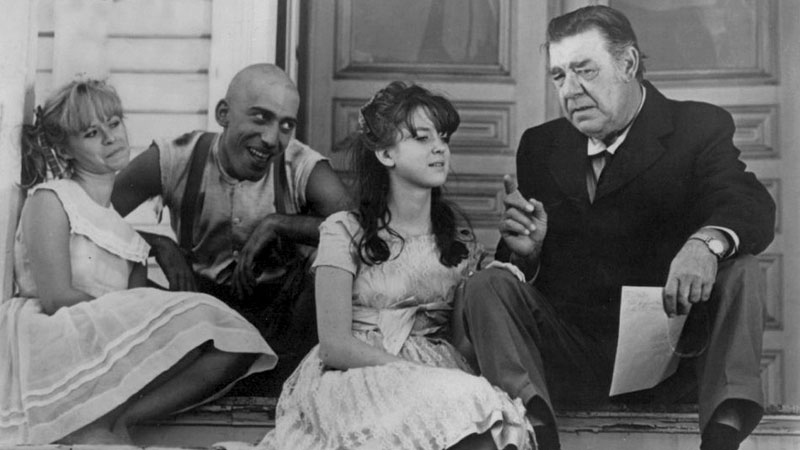
Virginia (Jill Banner) believes that she is part spider, hence the nickname “spider baby”. Her sister, Elizabeth (Beverly Washburn) may act like an innocent little girl, but she’s just as homicidal as her older brother Ralph (Sid Haig). These are the Merrye siblings, looked after and cared for by their deceased father’s chauffeur Bruno (Lon Chaney Jr.).
In a nod to the Universal Monster movies of the thirties and forties, filmmaker Jack Hill opens and closes his film Spider Baby (1967) with the direct address testimony of the Merrye children’s uncle Peter (Quinn Redeker), the sole survivor of an encounter with the Merrye children. This prologue establishes the back story as to why the Merrye’s are so deranged. Filmicly, it is a campy gensture on Jack Hill’s part but it effectively sets the tone of the film as half horror and half satire.
Screen legend Mantan Moreland is the first to die in Spider Baby, limiting his appearance too little more than a cameo that pays homage to Moreland’s Washington pictures. Moreland plays a mailman who has come to deliver news that the extended Merrye family is about to descend on the criminally insane household, setting the plot of the film in motion.
Jack Hill’s concept is an inspired update of James Whale’s masterful The Old Dark House (1932) with a whole lot more sex, violence, and bad taste thrown into the mix. In addition to the playful murders committed by Virginia and Elizabeth, Hill treats his viewer to images of a scantily clad Carol Ohmart running around in the dark and some bizarre Sid Haig creature work. Setting the “spider baby'” herself aside, the most memorable parts of the movie are Lon Chaney Jr. and Quinn Redeker.
Quinn Redeker steals many of his scenes as the likeable, square jawed hero type who is far to willing to assume the best of his maniac nieces and nephews. Redeker’s line readings, in particular his “Do you really like the Wolf Ann Man”, reveal an endearing oafishness to the character that makes him as much a man-child as any of the Merryes. Lon Chaney Jr.’s work is some of the best of his late career period. There’s an earnestness to his scenes that bring a tenderness and sincerity to a film that often plays out with a cruel sense of irony.
There is an abundance of similarities between Spider Baby and The Texas Chainsaw Massacre (1974) from the structure of the narrative to the look and design of some of the characters. However, Spider Baby is still very much a film of the sixties. It does not unsettle in the same way as Hooper’s film, preferring to ground even its most disturbing qualities in a lighter, comedic tone. Spider Baby is both the conceptual and aesthetic bridge between the era of Samuel Z. Arkoff and William Castle drive-in features and the grindhouse era of The Texas Chainsaw Massacre.
